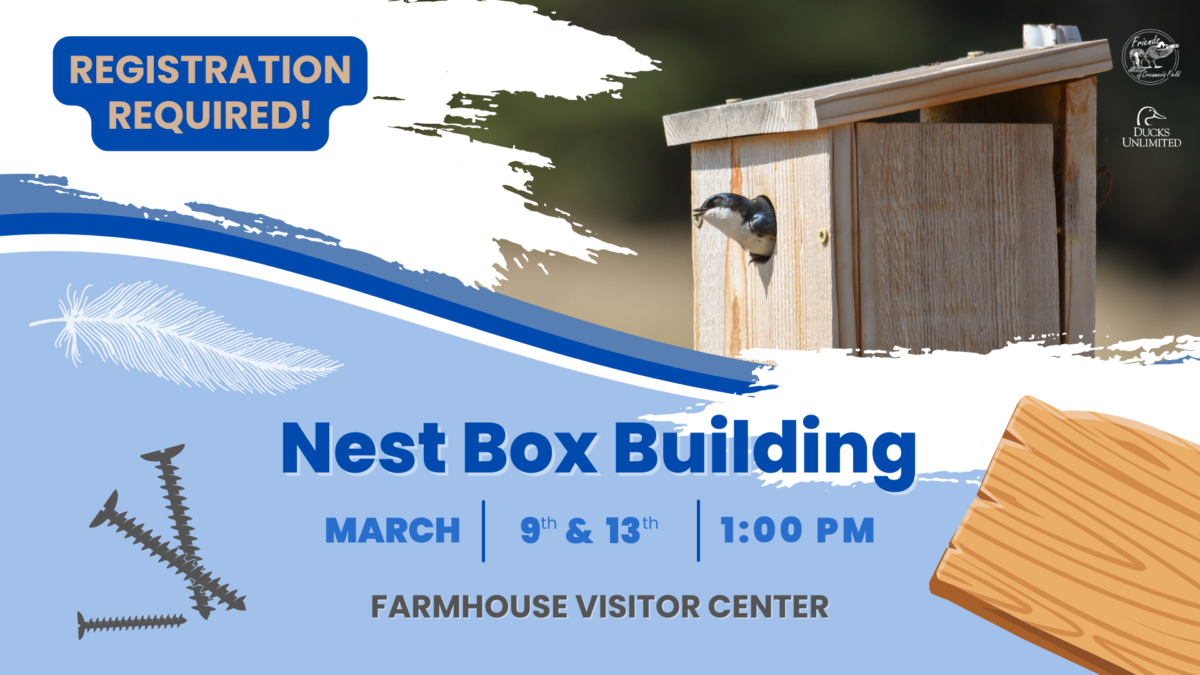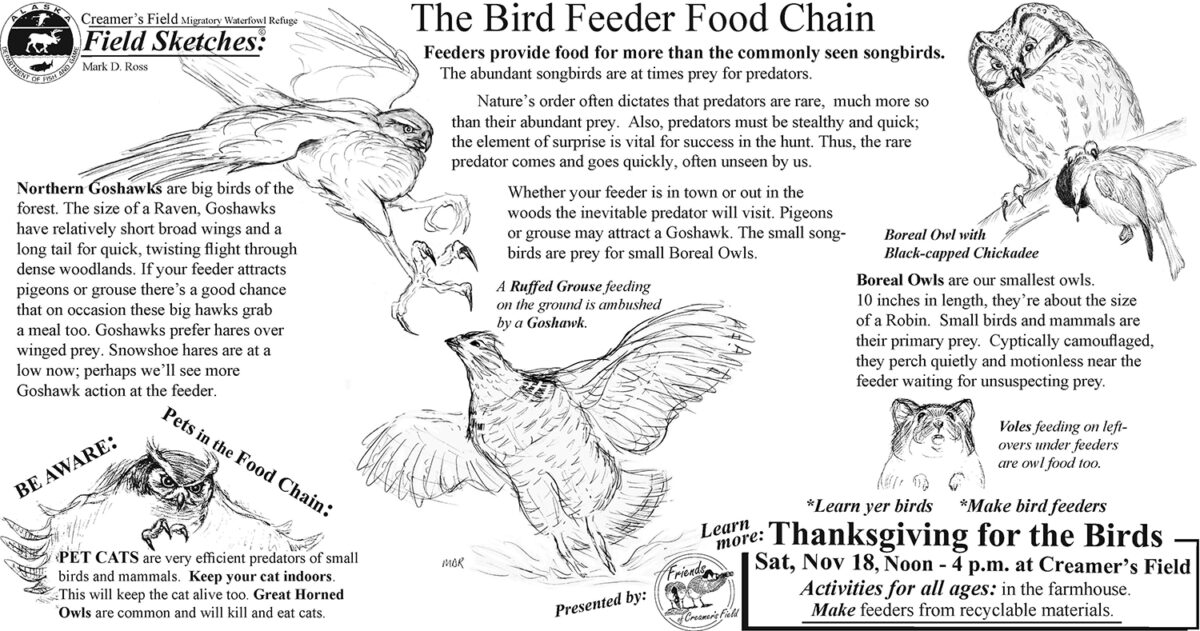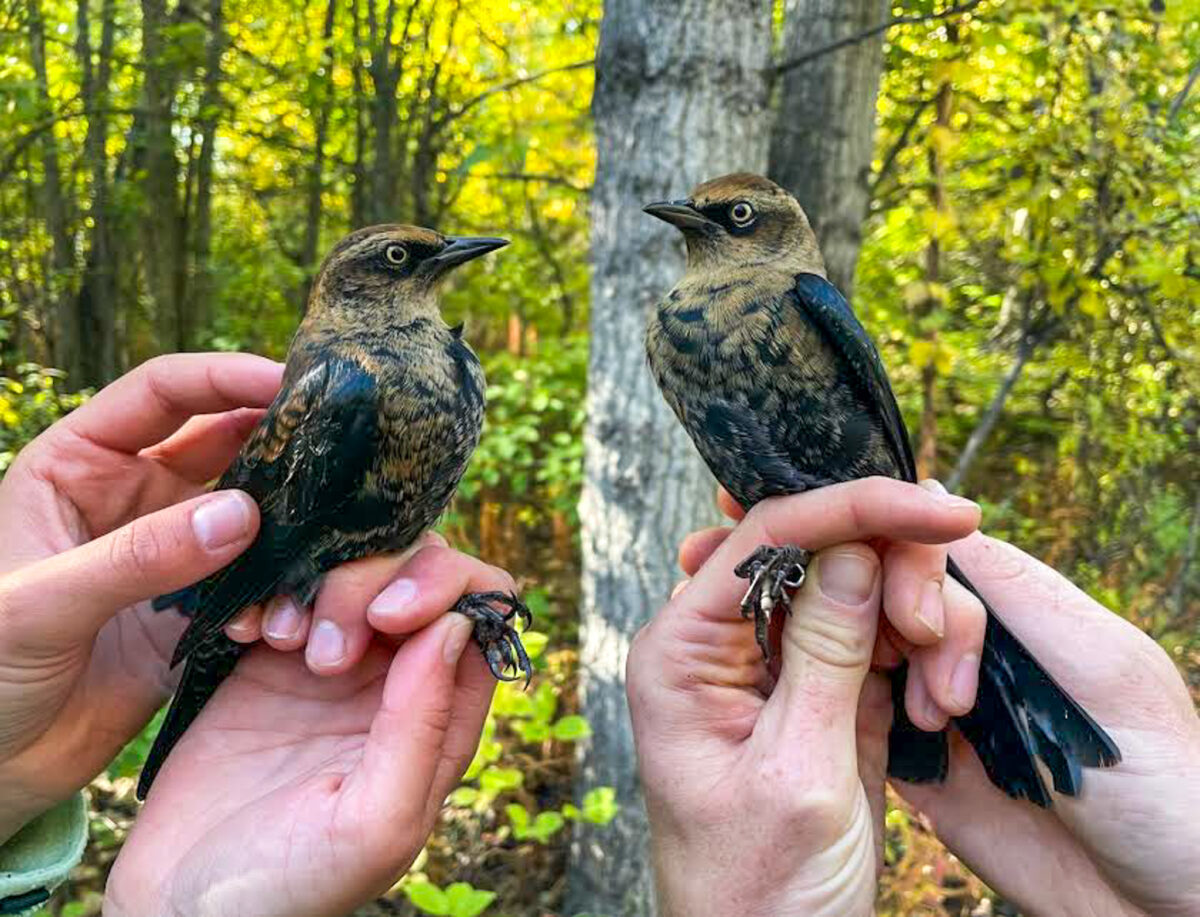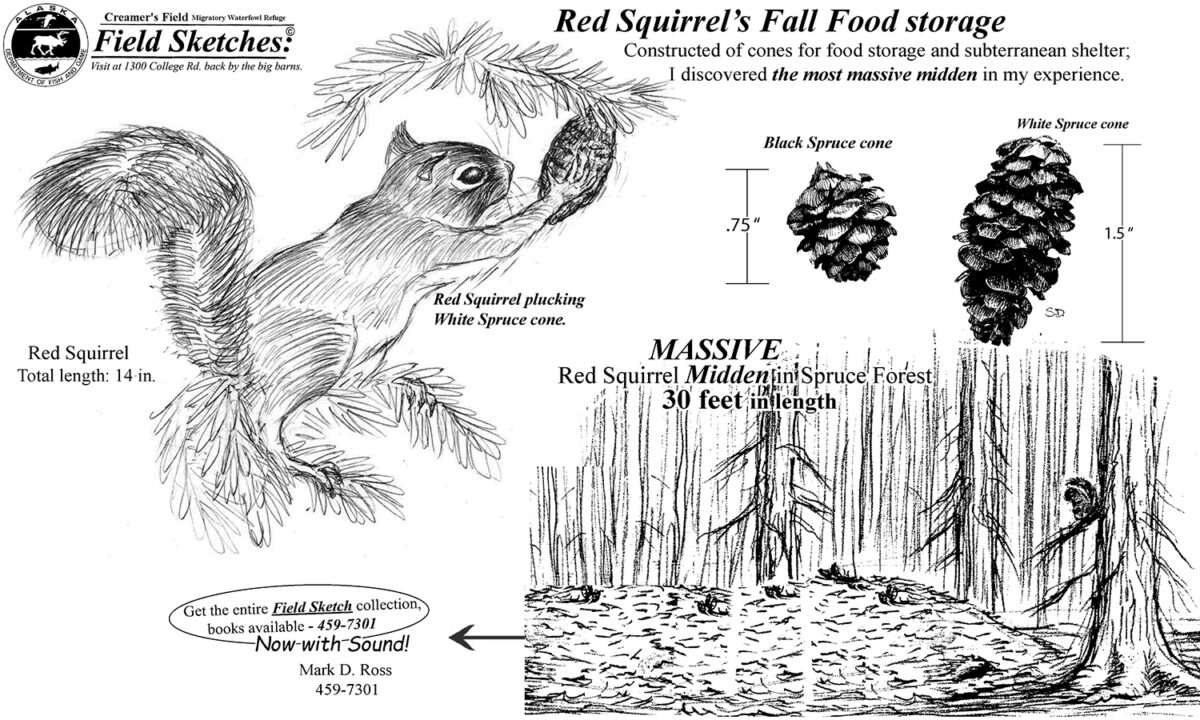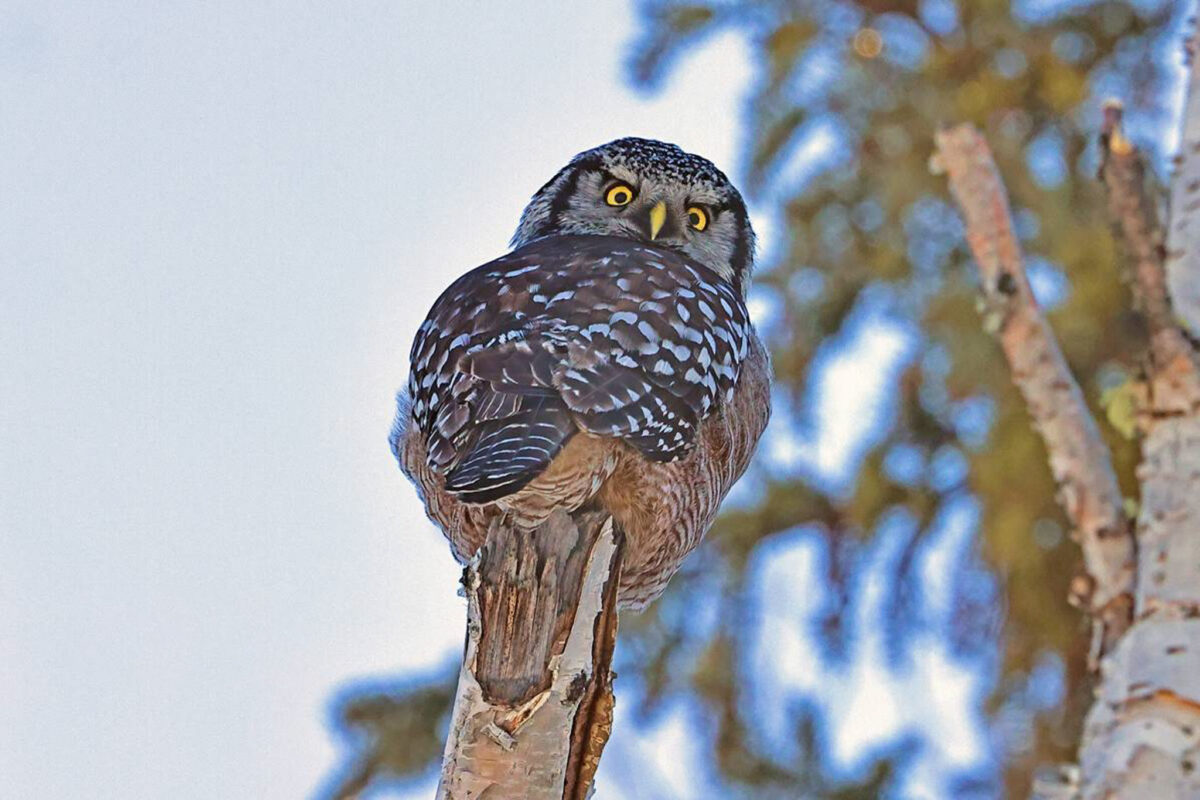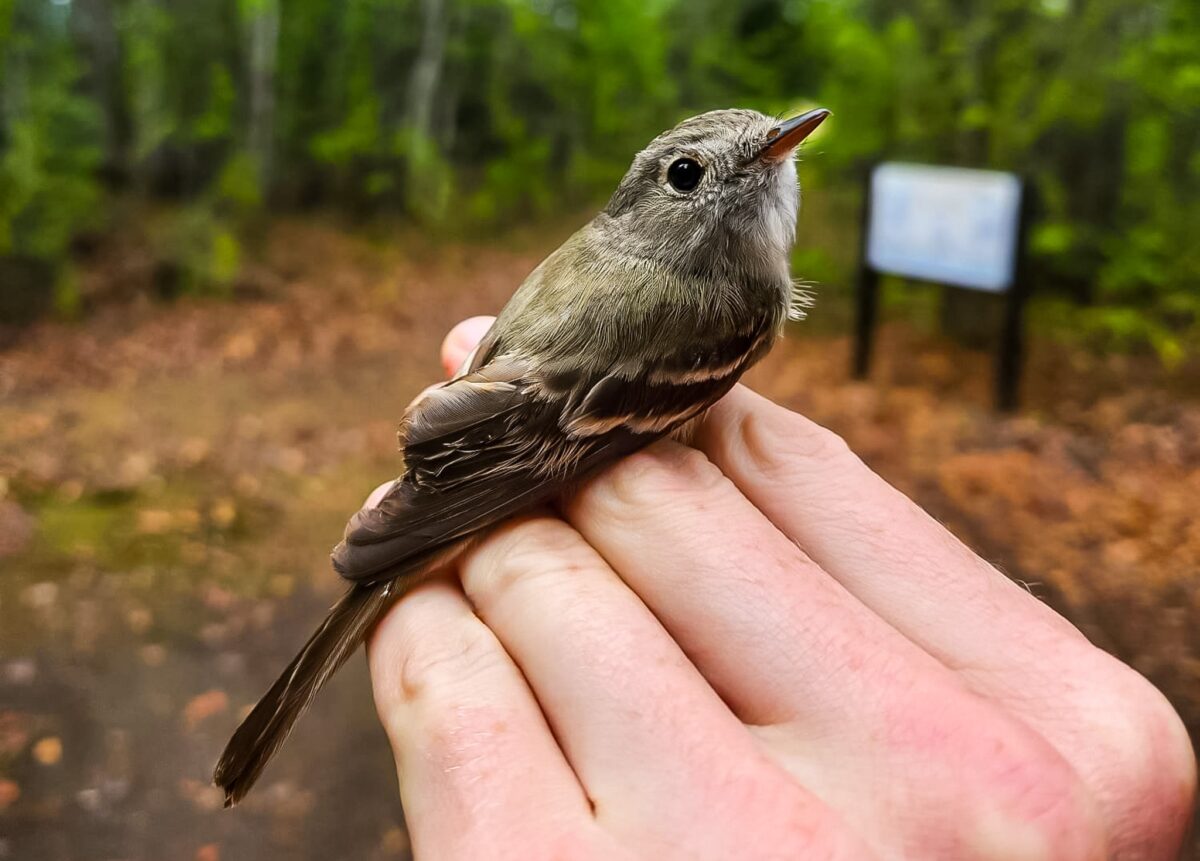In the transition from the cold winter to the warmer seasons, birds migrate to their summer grounds to find safe habitats to mate, give birth, raise young, escape predators, and to locate food. A majority of the nearly 470 bird species found here in Alaska are migratory and they travel here from all seven continents! Wildlife should never be approached in most situations. It is understandable to want to help wildlife that seems to be in trouble, but it is generally best to leave wild animals alone. Wildlife can get incredibly stressed by being handled by humans, the young and parents especially. Handling wildlife can even be detrimental to some species and impact their ability to thermoregulate or cause them to overheat. Some animals can even carry diseases that affect people and pets. It is quite common for birds and mammals to leave their young alone for short periods or to be nearby and out of your sight, and it …
There is no Dog Poop Fairy at Creamer’s Field
With the melting of snow this breakup season, residents and visitors will start to see an influx of dog waste EVERYWHERE in Fairbanks! What’s with all the dog poop and bags? Does your walk routine with your furry best friend look similar to this? We’ve learned that there’s often no malice behind leaving poop bags on the ground. Many of us have our hands full while walking our pets, so we decide to leave the bags on the trail and grab them on our way back. And then, as we’re thinking about getting to work, hurrying home to make food, or picking up our kids…we forget to grab the poop bag! Over time, these lapses can have bad consequences for our natural spaces. Creamer’s Field Migratory Waterfowl Refuge is a unique gem to the Fairbanks area due to its diverse habitats and abundant seasonal wildlife. Creamer’s Field is a state wildlife refuge managed by the Alaska Department of Fish and …
The Bird Feeder Food Chain
Bird feeder’s provide food for more than the commonly seen songbirds. The abundant songbirds are at times prey for predators. Listen below to ADF&G Wildlife Biologist, Mark Ross as he witnesses a Black-capped Chickadee’s interaction with a Northern Shrike at Creamer’s Field!
Seeking Songbirds: Fall Bird Banding at the Creamer’s Field Migration Station
The rapidly shifting seasons continually brings many changes to Creamer’s Field Migratory Waterfowl Refuge. As the springtime floodwaters receded, the warmer days awakened hibernating life, and the sunlight from the longer days brought forth lush green leaves and grass seemingly overnight! In the spring, sojourning songbirds arrived after their long migratory journeys to raise the next generation during the warmer months. The birds embark on various nest establishing and construction in preparation for breeding. The abundance of berries, fruit, seeds, insects, and other invertebrates during the warmer months grant adult birds the ability to feed themselves, their young, and eventually the young birds learn to forage and feed themselves throughout the season. Bird Population Data The Alaska Songbird Institute (ASI) completed their banding efforts for 2023 at the Creamer’s Field Migration Station (CFMS) for the fall season. As discussed, in a previous blog post about springtime bird banding: researchers catch, record, and keep track of individual birds by placing an …
Creamer’s Sounds and Sights: Massive Midden
Listen to ADF&G Wildlife Biologist and environmental educator Mark D. Ross talk about various wildlife and habitats here at Creamer’s Field.
Resident Raptors: A Chronology of the Northern Hawk Owls at Creamer’s Field
Creamer’s Field Migratory Waterfowl Refuge became home to a nesting pair of Northern Hawk Owls for the better part of a year. These solitary and mysterious birds of prey remained a constant and extraordinary presence here on the refuge for humans and wildlife alike. Their visible hunting and nesting activities created an accessible spectacle. Many dedicated local birders and refuge staff were able to document every daily aspect of these owls’ lives from witnessing daily hunting during the late fall and winter, mating, establishing a nesting site, successfully raising young, and battling other local predators for territory throughout the many months of their residence here on the refuge. Range and Habitat The Northern Hawk Owl, Surnia ulula, remains as one of the least-studied birds in North America. The name “hawk owl” comes from its hawk-like body shape, posture, and daytime hunting habits. It is a medium-sized owl at 16″ long and has a long slender tail, black facial disk borders, …
Seeking Songbirds: Spring Bird Banding at the Creamer’s Field Migration Station
For decades, the site of the former dairy and current Creamer’s Field Migratory Waterfowl Refuge has been distinguishable by the grand white barns, expansive open fields, white pillars of birch trees on the wetland, plentiful wildlife, and miles of trails. Amid the various habitats and wildlife, the refuge is best known by birdwatchers, photographers, and researchers for its abundance of birds. The refuge hosts resident and migratory birds of all types including waterfowl, shorebirds, Sandhill Cranes, seabirds, birds of prey, and songbirds. Songbirds at Creamer’s Field are notable for the vast amount of data they’ve provided to scientists over the decades at the research station based here. To find it, visitors must venture to the west side of the refuge. Along the Seasonal Wetland Trail, nestled back in the boreal forest at the center of numerous converging footpaths, is the northernmost continually operated songbird banding station in North America: The Creamer’s Field Migration Station (below). The Creamer’s Field Migration Station …
Early Spring at Creamer’s Field
Listen below to ADF&G Wildlife Biologist and environmental educator Mark D. Ross talk about the recent wildlife spotted at Creamer’s Field; Moose, the Northern Hawk Owl, and a Snow Bunting!
- Page 1 of 2
- 1
- 2



